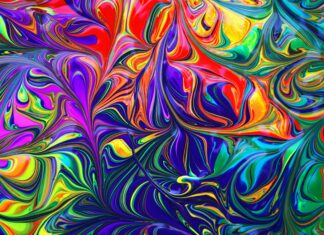Roboflow is a comprehensive computer vision platform that enables developers and data scientists to build and deploy machine learning models for image and video analysis. With its powerful set of tools and features, Roboflow simplifies the entire process of managing, annotating, preprocessing, and training visual data, making it easier to create and deploy state-of-the-art computer vision models.
Roboflow offers a robust set of capabilities designed to streamline the computer vision workflow. The platform supports various image and video annotation formats, including bounding boxes, polygons, keypoints, and semantic segmentation masks. These annotation tools make it easy to label and annotate visual data accurately and efficiently, providing the necessary ground truth for training machine learning models.
One of the key features of Roboflow is its advanced preprocessing capabilities. Preprocessing is a crucial step in any computer vision pipeline as it involves transforming and augmenting the raw visual data to enhance model performance. Roboflow provides a wide range of preprocessing options, such as resizing, cropping, rotation, and data augmentation techniques like flipping, blurring, and color adjustments. These preprocessing capabilities can be customized and combined to optimize the dataset for training and achieve better model performance.
Training deep learning models for computer vision tasks can be resource-intensive and time-consuming. Roboflow offers an end-to-end training infrastructure that simplifies model development and deployment. The platform supports popular deep learning frameworks like TensorFlow, PyTorch, and Keras, allowing users to train models using their preferred frameworks. Roboflow also provides cloud-based GPU acceleration, which significantly speeds up the training process and reduces the time to deploy models into production.
In addition to model training, Roboflow provides deployment options to make it easy to integrate computer vision models into various applications. The platform offers APIs and SDKs that enable developers to seamlessly integrate trained models into their own software applications, whether it’s a mobile app, web service, or embedded system. This allows developers to leverage the power of computer vision in their own projects without the need for extensive infrastructure or expertise.
Roboflow also offers model versioning and collaboration features, allowing teams to work together efficiently on computer vision projects. Users can manage different versions of their models, track changes, and collaborate with teammates, making it easier to iterate and improve models over time. The platform provides a centralized hub for managing datasets, models, and experiments, facilitating seamless collaboration and knowledge sharing among team members.
Roboflow is a comprehensive computer vision platform that provides a wide range of tools and features to simplify the process of building and deploying machine learning models for image and video analysis. Its capabilities include data annotation, preprocessing, model training, deployment options, and collaboration features. By leveraging Roboflow’s powerful platform, developers and data scientists can accelerate the development of computer vision applications and bring their ideas to life more efficiently.
Now, let’s focus on the five most important things about Roboflow:
1. Simplified Data Annotation: Roboflow offers a user-friendly interface for annotating visual data, allowing users to label images and videos with various annotation types like bounding boxes, polygons, and semantic segmentation masks. This simplifies the process of creating high-quality training datasets, saving time and effort.
2. Advanced Preprocessing Capabilities: With Roboflow, users can easily preprocess and augment their visual datasets. The platform provides a wide range of options, including resizing, cropping, rotation, and data augmentation techniques, empowering users to optimize their data for training and improve model performance.
3. Seamless Model Training and Deployment: Roboflow supports popular deep learning frameworks like TensorFlow, PyTorch, and Keras, allowing users to train models using their preferred frameworks. The platform also offers cloud-based GPU acceleration, significantly reducing training time. Moreover, Roboflow provides APIs and SDKs for easy integration and deployment of trained models into various applications, making it convenient for developers to incorporate computer vision capabilities into their software projects.
4. Collaboration and Versioning: Roboflow facilitates team collaboration by providing features for versioning and collaboration. Teams can manage different versions of models, track changes, and collaborate efficiently, enhancing productivity and enabling iterative improvements in computer vision models. The centralized hub for managing datasets, models, and experiments ensures seamless knowledge sharing among team members.
5. Extensive Documentation and Support: Roboflow offers comprehensive documentation, tutorials, and guides to assist users in navigating the platform and its functionalities. The platform also provides responsive customer support, ensuring that users have access to assistance when needed, thereby enhancing the overall user experience.
Roboflow is a powerful computer vision platform that simplifies the process of building and deploying machine learning models for image and video analysis. Its key features include simplified data annotation, advanced preprocessing capabilities, seamless model training and deployment options, collaboration and versioning features, and extensive documentation and support. By leveraging Roboflow, developers and data scientists can accelerate their computer vision projects and achieve efficient and accurate results.
Roboflow’s simplified data annotation feature is a game-changer for developers and data scientists working on computer vision projects. The user-friendly interface allows users to easily label images and videos with various annotation types such as bounding boxes, polygons, and semantic segmentation masks. This streamlines the process of creating high-quality training datasets, saving valuable time and effort. With Roboflow, annotating data becomes a seamless task, enabling users to focus more on model development and analysis.
Another crucial aspect of Roboflow is its advanced preprocessing capabilities. Preprocessing is a vital step in any computer vision pipeline as it involves transforming and augmenting raw visual data to enhance model performance. Roboflow provides a wide range of preprocessing options, including resizing, cropping, rotation, and data augmentation techniques like flipping, blurring, and color adjustments. These preprocessing capabilities can be customized and combined, allowing users to optimize their datasets for training and achieve better model performance.
When it comes to training and deployment, Roboflow offers a comprehensive solution. The platform supports popular deep learning frameworks such as TensorFlow, PyTorch, and Keras, empowering users to train models using their preferred frameworks. Additionally, Roboflow provides cloud-based GPU acceleration, which significantly speeds up the training process and reduces the time required to deploy models into production. This acceleration ensures that users can develop and iterate on models faster, leading to more efficient development cycles.
Roboflow’s deployment options are designed to make it easy for developers to integrate computer vision models into their applications. The platform provides APIs and SDKs that enable seamless integration of trained models into various software projects, whether they are mobile apps, web services, or embedded systems. This flexibility allows developers to leverage the power of computer vision in their own applications without the need for extensive infrastructure or specialized expertise.
In addition to its annotation, preprocessing, and deployment capabilities, Roboflow offers collaboration and versioning features. These features enable teams to work together efficiently on computer vision projects. Users can manage different versions of their models, track changes, and collaborate with teammates, all within the platform. This centralized hub for managing datasets, models, and experiments fosters seamless collaboration and knowledge sharing among team members, leading to improved models and faster project iterations.
To ensure that users can make the most of the platform, Roboflow provides extensive documentation, tutorials, and guides. The documentation covers various aspects of using Roboflow, from getting started to advanced techniques. It serves as a valuable resource for users to navigate the platform effectively and leverage its full potential. Furthermore, Roboflow offers responsive customer support, ensuring that users have access to assistance when they need it, and enabling a smooth and satisfying user experience.
In conclusion, Roboflow is a comprehensive computer vision platform that simplifies the process of building and deploying machine learning models for image and video analysis. Its simplified data annotation, advanced preprocessing capabilities, seamless model training and deployment options, collaboration and versioning features, and extensive documentation and support make it a powerful tool for developers and data scientists. By leveraging Roboflow’s capabilities, users can accelerate their computer vision projects, achieve accurate and efficient results, and bring their ideas to life more effectively.


















